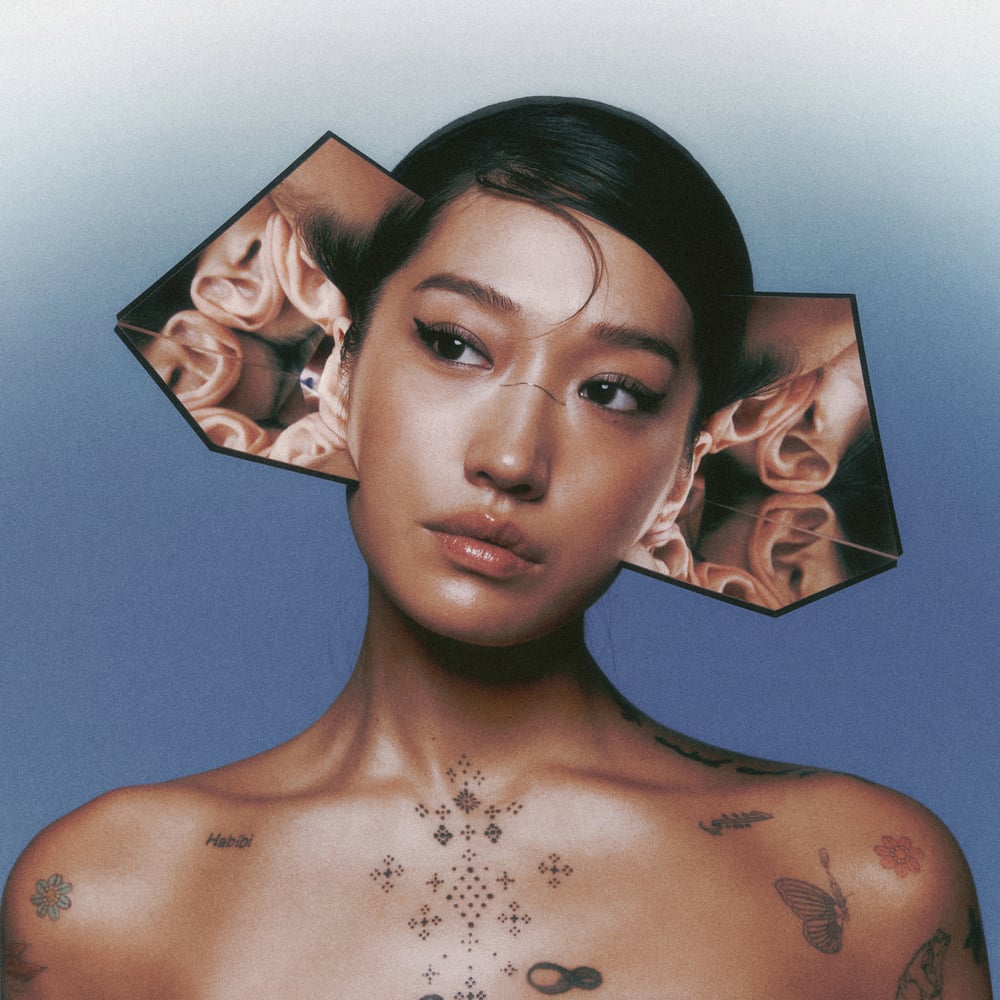
The story goes that one day over lunch in Berlin, Olafur Eliasson stood up from the restaurant table and showed Peggy Gou his dance moves. His impromptu dance seems to have laid the ground for a collaboration between the contemporary art star and the electronic music giant.
Since first emerging from London’s underground scene in the 2010s, Gou’s groovy take on ’90s house music has catapulted her to mainstream success—she played to over a million people in 2023. After a string of well-received EPs, the South Korean-born musician is set to release her first full-length record, I Hear You, via XL, on June 6. Eliasson is heavily involved.
First, there’s the album cover. Gou appears in profile on a gauzy blue background, her gaze averted. What truly catches the eye, however, are the mirror pieces affixed behind her ears. Angled so as to reflect a spiral of ears, they are a fittingly playful image for the album’s title. The piece itself is Eliasson’s Psychoacoustic empathy amp (2023), a sculpture centered on how the body receives sound and how, in turn, our brains interpret such sounds.
In essence, it’s an aural version of his 2011 work Your plural view, in which viewers placed their heads in a construct of mirrors, only to be confronted with myriad reflections of themselves.
Eliasson’s influence continues on “1+1=11,” the third single released from I Hear You. In a music video he directed, Eliasson appears inside his Berlin Studio dressed in a pink velour suit. He glides, spins, and pivots with swagger through the space. Geometric models and their shadows fill the background.
At times, he appears as an eight-tone silhouette projection, his dancing outline a whirl of pink and orange and white. It’s seemingly a follow through of his 2010 work Your uncertain shadow, an interactive installation that has been a mainstay (and Instagram magnet) of large-scale Eliasson shows. At other moments in the music video, Eliasson and Gou play with discs that block light, disappear, and conjure up oil slick patters.
“Sculpture and dance are both non-verbal languages. Sometimes in order to communicate, you simply have to move,” Eliasson said in a statement. “By bringing together dance with colorful shadows, lights, and mirrors, I was able to bring some of the key interests that have long shaped my art into an entirely new context.”
But perhaps the strongest indication of the connection between the Gou and Eliasson arrives on the album’s opener, “Your Art.” It’s Gou’s take on a poem Eliasson wrote about humanity’s responsibility to be environmentally proactive for his 2022 TIME cover story.